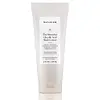What's inside
What's inside
 Key Ingredients
Key Ingredients

 Benefits
Benefits

 Concerns
Concerns

 Ingredients Side-by-side
Ingredients Side-by-side

Water
Skin ConditioningGlycerin
HumectantPropanediol
SolventIsopropyl Myristate
EmollientHydroxyethyl Urea
HumectantEthylhexyl Olivate
Skin ConditioningSqualane
EmollientSodium PCA
HumectantHydrogenated Lecithin
EmulsifyingPolyglutamic Acid
Skin ConditioningGlyceryl Oleate
EmollientCeramide NP
Skin ConditioningPalmitic Acid
EmollientPCA
HumectantEthylhexyl Palmitate
EmollientPolyglyceryl-10 Stearate
Skin ConditioningSaccharide Isomerate
HumectantTriethyl Citrate
MaskingSerine
MaskingAlanine
MaskingGlycine
BufferingGlutamic Acid
HumectantLysine Hcl
Skin ConditioningThreonine
Arginine
MaskingTocopherol
AntioxidantCeramide As
Skin ConditioningCeramide Ns
Skin ConditioningProline
Skin ConditioningCeramide EOP
Skin ConditioningCeramide AP
Skin ConditioningAmmonium Acryloyldimethyltaurate/Vp Copolymer
Phenoxyethanol
PreservativeUndecane
EmollientHydroxyacetophenone
AntioxidantXanthan Gum
EmulsifyingTridecane
PerfumingSodium Stearoyl Glutamate
CleansingSodium Phytate
Citric Acid
BufferingBetaine
HumectantSodium Citrate
BufferingSodium Lactate
BufferingWater, Glycerin, Propanediol, Isopropyl Myristate, Hydroxyethyl Urea, Ethylhexyl Olivate, Squalane, Sodium PCA, Hydrogenated Lecithin, Polyglutamic Acid, Glyceryl Oleate, Ceramide NP, Palmitic Acid, PCA, Ethylhexyl Palmitate, Polyglyceryl-10 Stearate, Saccharide Isomerate, Triethyl Citrate, Serine, Alanine, Glycine, Glutamic Acid, Lysine Hcl, Threonine, Arginine, Tocopherol, Ceramide As, Ceramide Ns, Proline, Ceramide EOP, Ceramide AP, Ammonium Acryloyldimethyltaurate/Vp Copolymer, Phenoxyethanol, Undecane, Hydroxyacetophenone, Xanthan Gum, Tridecane, Sodium Stearoyl Glutamate, Sodium Phytate, Citric Acid, Betaine, Sodium Citrate, Sodium Lactate
Water
Skin ConditioningGlycolic Acid
BufferingC12-15 Alkyl Benzoate
AntimicrobialCetearyl Alcohol
EmollientIsopropyl Palmitate
EmollientSodium Hydroxide
BufferingOlus Oil
EmollientButyrospermum Parkii Butter
Skin ConditioningGlycerin
HumectantDimethicone
EmollientGlyceryl Stearate
EmollientC13-15 Alkane
SolventMagnesium Aluminum Silicate
AbsorbentPotassium Cetyl Phosphate
EmulsifyingHippophae Rhamnoides Fruit/Seed Oil
AntimicrobialCandelilla Cera
EmollientAllantoin
Skin ConditioningXanthan Gum
EmulsifyingHydrogenated Vegetable Oil
EmollientXylitylglucoside
HumectantAnhydroxylitol
HumectantXylitol
HumectantTetrasodium Glutamate Diacetate
Ethylhexylglycerin
Skin ConditioningPhenoxyethanol
PreservativeWater, Glycolic Acid, C12-15 Alkyl Benzoate, Cetearyl Alcohol, Isopropyl Palmitate, Sodium Hydroxide, Olus Oil, Butyrospermum Parkii Butter, Glycerin, Dimethicone, Glyceryl Stearate, C13-15 Alkane, Magnesium Aluminum Silicate, Potassium Cetyl Phosphate, Hippophae Rhamnoides Fruit/Seed Oil, Candelilla Cera, Allantoin, Xanthan Gum, Hydrogenated Vegetable Oil, Xylitylglucoside, Anhydroxylitol, Xylitol, Tetrasodium Glutamate Diacetate, Ethylhexylglycerin, Phenoxyethanol
 Reviews
Reviews

Alternatives
Ingredients Explained
These ingredients are found in both products.
Ingredients higher up in an ingredient list are typically present in a larger amount.
Glycerin is already naturally found in your skin. It helps moisturize and protect your skin.
A study from 2016 found glycerin to be more effective as a humectant than AHAs and hyaluronic acid.
As a humectant, it helps the skin stay hydrated by pulling moisture to your skin. The low molecular weight of glycerin allows it to pull moisture into the deeper layers of your skin.
Hydrated skin improves your skin barrier; Your skin barrier helps protect against irritants and bacteria.
Glycerin has also been found to have antimicrobial and antiviral properties. Due to these properties, glycerin is often used in wound and burn treatments.
In cosmetics, glycerin is usually derived from plants such as soybean or palm. However, it can also be sourced from animals, such as tallow or animal fat.
This ingredient is organic, colorless, odorless, and non-toxic.
Glycerin is the name for this ingredient in American English. British English uses Glycerol/Glycerine.
Learn more about GlycerinPhenoxyethanol is a preservative that has germicide, antimicrobial, and aromatic properties. Studies show that phenoxyethanol can prevent microbial growth. By itself, it has a scent that is similar to that of a rose.
It's often used in formulations along with Caprylyl Glycol to preserve the shelf life of products.
Water. It's the most common cosmetic ingredient of all. You'll usually see it at the top of ingredient lists, meaning that it makes up the largest part of the product.
So why is it so popular? Water most often acts as a solvent - this means that it helps dissolve other ingredients into the formulation.
You'll also recognize water as that liquid we all need to stay alive. If you see this, drink a glass of water. Stay hydrated!
Learn more about WaterXanthan gum is used as a stabilizer and thickener within cosmetic products. It helps give products a sticky, thick feeling - preventing them from being too runny.
On the technical side of things, xanthan gum is a polysaccharide - a combination consisting of multiple sugar molecules bonded together.
Xanthan gum is a pretty common and great ingredient. It is a natural, non-toxic, non-irritating ingredient that is also commonly used in food products.
Learn more about Xanthan Gum